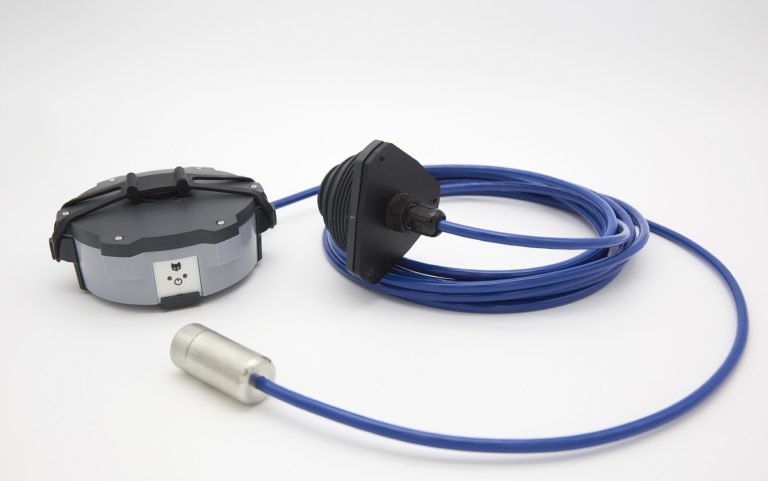
The company’s in-house team of experts is continuously working to hone the performance of their app, portal, and AI services, tailoring solutions to suit the unique requirements of their partners. Constantly innovating to reshape the landscape of tank management, FoxInsights explains how a customer-centric approach and advanced technology can enhance a fuel distributor’s operations and deliver significant fleet costs savings.
For some months now, the downstream market has been disturbed by various influences. Supply security and frequently changing prices are key challenges. It is becoming increasingly important that decision-making is based on real time data, given the impact of extreme market situations in the energy industry such as the increased need for renewable and sustainable energy sources, the move away from fossil fuels, and the knock-on effect of global crises with regard to energy supply. Without data, supply decisions must be made randomly, which can lead to high costs being paid.
The longer a company continues to dispatch to a high frequent customer segment without using data, the more money will be wasted. Fuel suppliers would always prefer to deliver one time too often than have a customer run dry but, over a long period, the additional miles driven to achieve this all add up. Supply systems without a real-time data-point, in which customers actively decide about their order, intensify the supplier’s pain even more.
Data answers the question: who really needs a delivery right now?
Intelligent tank data analysis shows that, on average, only 42.3% of a diesel tank’s capacity is used, which means 57.7% is not. The median drop-off volume is 3.848 litres, with a mean refill interval of 14 days. In the interest of both the supplier and the B2B customer, the goal is to use 70% of the capacity and, thus, extend the interval. For customers, this results in paying less for deliveries and benefiting from better scale prices if they purchase larger quantities each time. For the supplier, the optimisation lies in the reduction of delivery costs, which make up the largest cost block.
Analysis indicates that operating costs can be reduced by up to 30% if deliveries are kept to a minimum.
Analysing the data on hand, FoxInsights states a 10% increase of tank utilisation through transparency. An initial increase is achieved immediately on the installation of the telemetry unit with an additional 5% seen over the first year by establishing an optimised, data-based logistic. Applying this to the average diesel drop-offs in Germany, the delivery interval was extended by 3 days (to 17 days).
To benefit on an even higher level and exploit the potential of AI-based dispatching with tank usage up to 70%, flexibility for the supplier is a key success factor. This is achieved through a contract model with vendor-managed inventory and automated deliveries.
Everything is fine. Until it is not.
The analogue handling of logistics is not a thing of the past, but still common practice at many suppliers. This leads to several business continuity challenges. Even if the dispatcher manages to deliver to regular customers in a well-organised pattern and understands the seasonal changes within the consumption, the difficulty begins if a single person with all the relevant knowledge is absent from work or leaves the company.
During these times when a deputy dispatcher has to step in, valuable money is lost due to a lack of knowledge of seasonal, regional or customer-specific characteristics. Other factors also pose challenges, such as the continuous growth of a business. As soon as the territory covered increases, the newly acquired customer patterns must be learned individually again. At the same time, one person can only handle a certain amount of information and deliveries if this is done in an analogue way.
To prevent loss of knowledge as well as enable a stable growth (acquisition or natural), a company-wide usable data source is becoming crucial.
Optimising logistics on a high-level starts at the very beginning.
Existing logistics optimisation tools focus on truck/order combination and route planning. However, the biggest potential lies much earlier in the process. The first step should be to determine which orders actually need to be processed. With that in mind, only a small part of optimisation potential is addressed with existing programmes.
Tools like FoxInsight’s Dispatching Assistant are targeting logistics optimisation right in the beginning. Artificial intelligence offers a unique way of combining the data point with its consumption, the product itself (which is simple in diesel but highly complex within lubricants) as well as analysis clusters such as location and the remaining range of tanks nearby. By doing so, proposals for tanks to be delivered to are created for each day – and this 7-10 days in advance! The Dispatching Assistant is enabling a databased delivery to all top-up customers and still leaves enough flexibility to deliver to spot buyers or emergency deliveries.
With AI-based dispatching, suppliers can exploit the optimisation potential, decreasing the costs per delivered litre, and thereby reducing overall operating costs.

